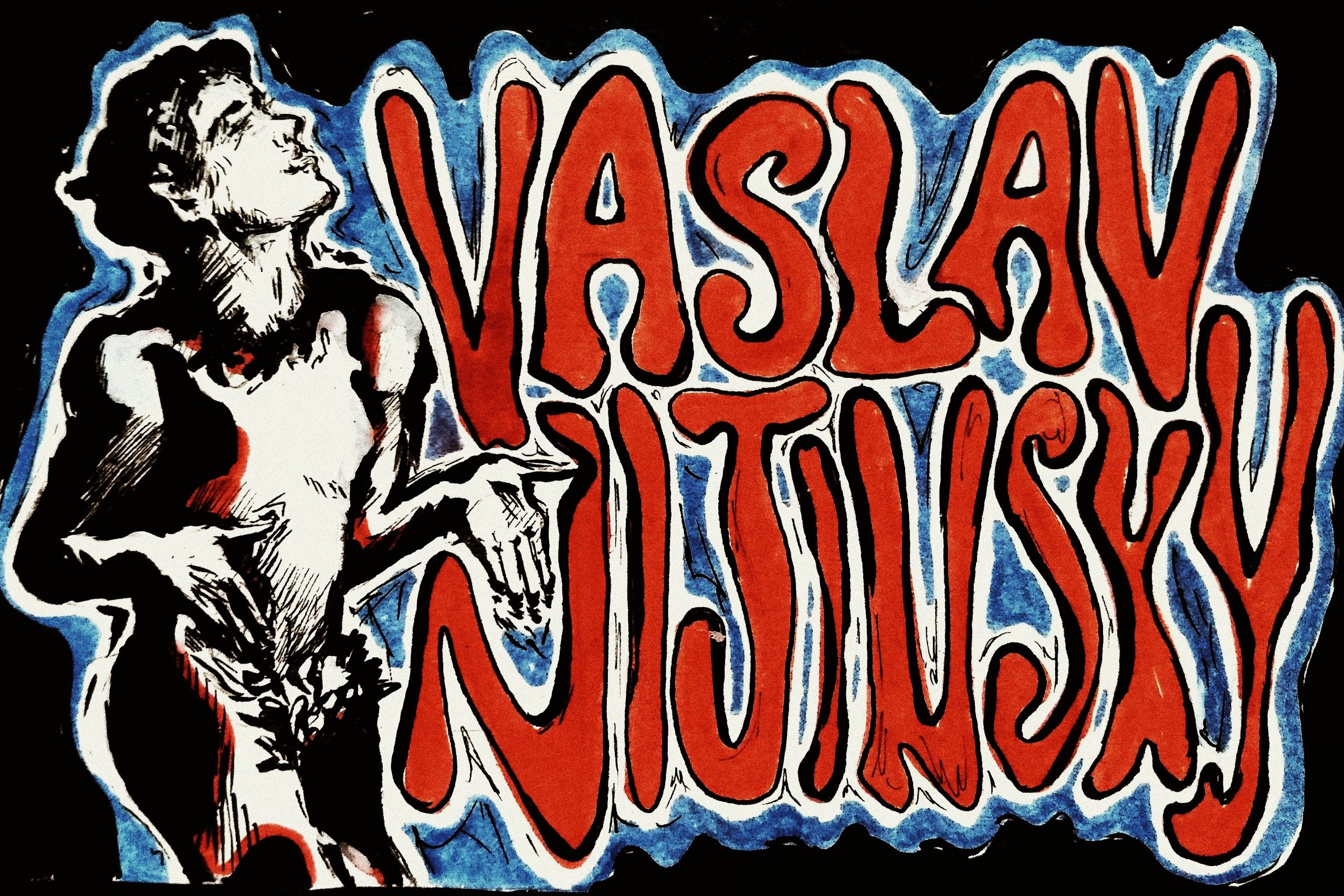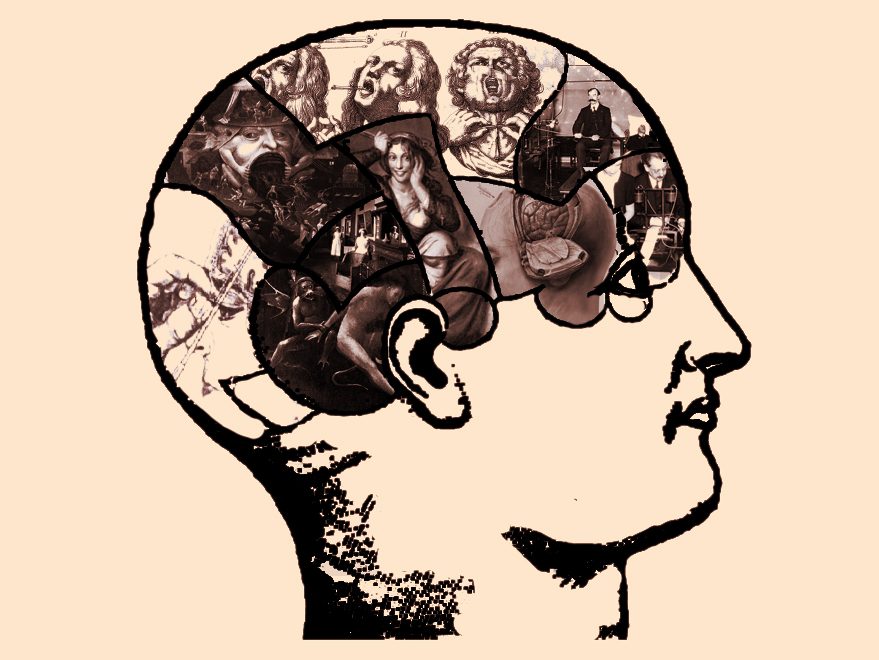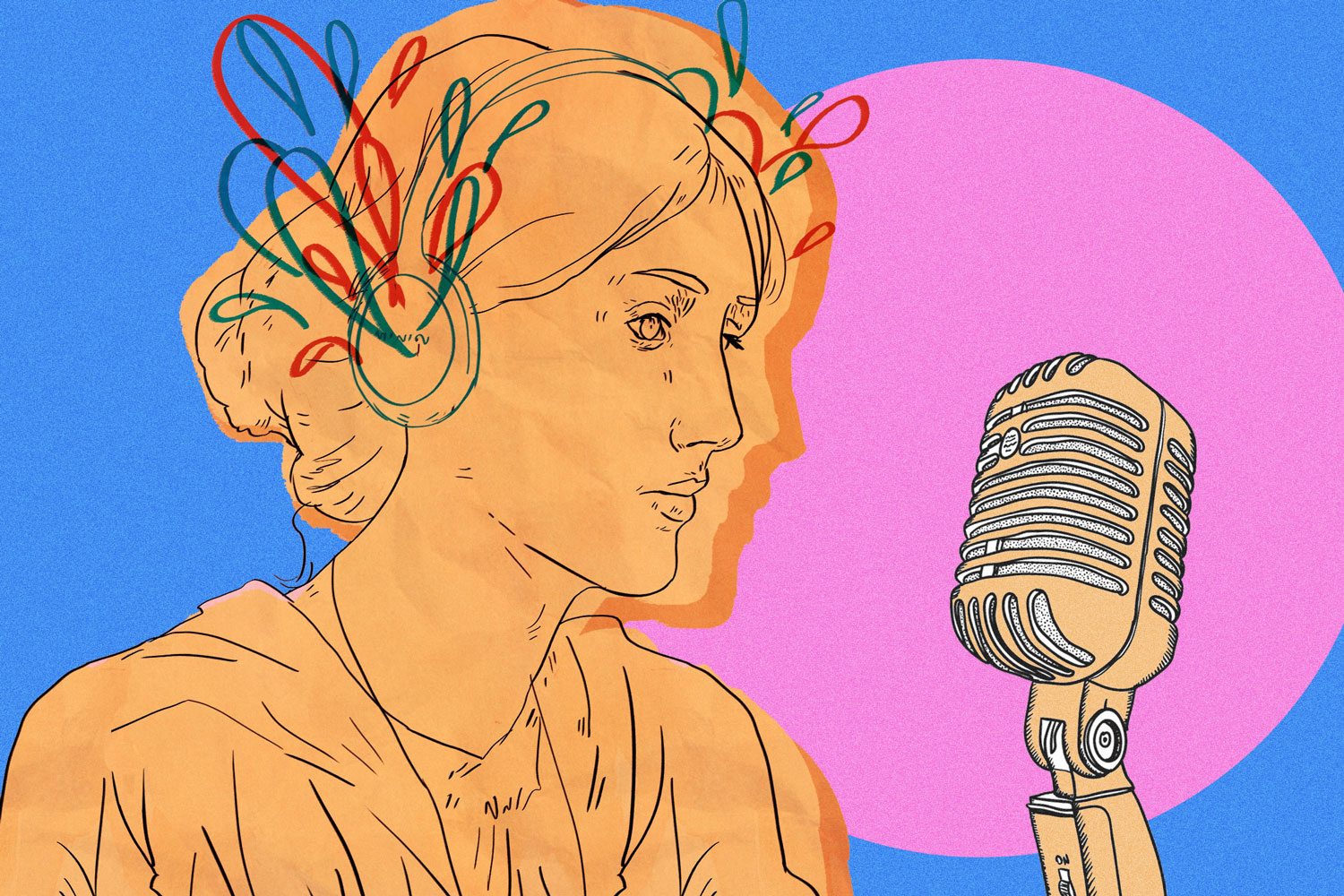
On Jean Jones
Centered in Pembroke JCR’s Jean Jones exhibition, disrupting the otherwise conventional gallery layout, is a glass case containing an array of memorabilia. The case is unlabeled, and only a single exhibition leaflet from the 80s clues the viewer into the fact that these are all items from the artist’s life: a collection of photos, a school diary, a list of side effects for a lithium prescription. These items are personal, and their unexplained presence in the exhibit is just prominent enough to shift the viewer’s perspective on the paintings being displayed. As we look at them, we reach a silent understanding: to appreciate Jones as an artist, her identity as an individual should never be too far behind.
Pembroke JCR’s latest exhibition highlights the artwork of Jean Jones, a British artist active in the late twentieth century, who for many years called Oxford home. Understanding Jones as an individual is crucial to experiencing her work. Within Jones’ paintings, identity and subject intermingle. Not only is her subject matter highly personal – she frequently revisited the same places and people throughout her painting career – but so is the her depiction of these subjects. Her manipulation of perspective and colour makes it so that in Jones’ work, it is impossible to see her paintings and not be acutely aware that we are observing her reality through them.
Upon a clockwise tour of the exhibit, the first few paintings on display are Jones’ repeated landscapes of the fields near Dartmoor. One would expect the landscapes to showcase Jones at her most observational, yet even these paintings are inflected with her private life. She had a cottage in Dartmoor, and this was a place she was intimately familiar with. In three paintings of Dartmoor’s prehistoric stone circle, Ringmoor, the viewer is presented with the same stone circle in two seasons – one summer view of the stones in a sun-bleached field and two autumnal views of the stones surrounded by rusty grass. What is notable about these paintings is not the seasonal change but Jones’ consistent presence in them: the slightly warped, fish-eyed lens of the sky, the sometimes soft then suddenly feathered texture of the grass, and the way hills dreamily flow into each other, so that depth becomes negligible. Jones’ personal attachment to the fields is communicated through her work. Her landscapes do not evoke the idea that she is trying to study changing fields through time, but rather that she is trying to pin down a place of fond attachment.
Jones’ landscapes are not one-note, though. Just as easily as Jones can lure us into a welcoming field, she can throw us out. The painting Untitled (Across the Valley) presents a familiar landscape, yet this time in a tilted, diagonal frame. The decision to angle a landscape jars the viewer, disrupts their expectations, and reminds them that this is Jones’ take on her surroundings. Even in the most innocuous of landscapes, Jones reminds you who is pulling the strings.
It is not just Jones’ presence that is felt through her work but its volatility. In one turn she is thorough and doting with her subject matter – such as with the tender landscapes – and the next brash and destructive, such as in Broken Dishes, a startlingly violent still-life of a pear. The uncertainty of Jones’ interpretation of her subjects is emphasised by the paintings Pembroke JCR Art Collection have curated alongside Jones’ work. A Paul Nash landscape of stone ruins, Landscape of the Megaliths, takes a markedly different approach to depicting nature. Nash’s images are carefully delineated, the boundaries between rock, ground, and sky clear and distinct. Such easy distinctions are not present in Jones. In From the Common – Leemor, sky and cloud swim together, boundaries dissolving and intermingling between them. Jones’ depiction of reality is less sure. The subjectivity of her experience is a more emphasized feature.
It is tempting to explain the partiality of Jones’ depictions by looking to a key element in her biography: her struggle with bipolar disorder. Mental illness was not a footnote in Jones’ life – she was institutionalized twice – and the exhibition does not treat it as such. Within the exhibit’s memorabilia-laden glass case, next to the list of lithium side effects, is a handwritten note Jones scribbled while institutionalized. Jones’ anger and paranoia are communicated in just a few lines, protesting, “You can’t keep me here,” as she railed against her medication, and insisting, “they’ve given me something else.” The literal centering of Jones’ personal life in the exhibition space is poignant. It reminds us of the individual that existed beyond the artist and raises the question of how these two identities influenced each other.
The role of mental illness in artistic brilliance has long been over-romanticised. To combat this romanticisation, museums have recently worked to discredit the image of the tortured artist, such as in The Tate’s short film, Van Gogh: Challenging the Myth of the ‘Tortured Genius,’ and the Jean Jones Estate’s direct response to this with their own online exhibit, Jean Jones: The Myth of the Tortured Genius. The aim of projects like these is to separate illness from artistry. Artists are artists in their own right, not solely because they were mentally ill.
The impulse to isolate mental illness from the discussion of artists and their art is understandable. At its worst, the romanticization of mental illness takes the agency out of artistry and treats artwork as inevitable, a product of chemical imbalances rather than artistic choice. Indeed, interpreting Jones’ work as nothing more than a reaction to instability would be an injustice to her craft. In fact, she is in clear dialogue with art history. As the Jean Jones Estate’s online exhibit attests, Jones’ use of colour was influenced by Charles Blanc’s colour theory. This puts her in direct conversation with similarly influenced Post-Impressionists, such as Vincent van Gogh. Pembroke JCR’s curation highlights Jones’ deliberate use of colour by arranging a Jones portrait and painting of a backyard besides Patrick Heron’s December 30:82:11, an abstract composition of shape and colour. Colour is of central importance to Heron’s work, and by placing his composition side by side with Jones’ more representative works draws out the deliberate use of colour in them as well. Suddenly the viewer notes that in her painting of a backyard, Holywell Cottage Garden, the real emphasis is not on the spindly tree trunk or its staccatoed leaves, but the red, blue, and yellow clothes hanging on the clothesline, interrupting the natural scene with a touch of domesticity. Colour was a way for Jones to control the viewer’s experience, guide their eyes throughout her work until it landed on what Jones considered important. This was an artist commanding her narrative – often unreliably, but knowingly so.
At the same time, to completely remove mental illness from Jones’ work would be to remove some of Jones’ experience of selfhood, intrinsic to the final product, from her art. Nowhere is this seen more clearly than in the three self-portraits that hang in the exhibition room. Self-portraits are one of the most direct ways an artist can inject themselves into their painting – the treatment of artist as subject allows artists to explore their own understandings of self, something perhaps accomplished most famously by van Gogh, another artist who struggled with mental illness and whose letters first inspired Jones to take on painting seriously. Jones’ depiction of herself ranges wildly –sometimes viciously – between her three self-portraits, starting with the first painting that opens up the exhibit, Me. In this work, Jones depicts herself from a bird’s-eye view, an angle that distorts her body so that her torso is uncomfortably arched forward and an arm is impossibly twisted in the air. Feelings of dissociation abound. In Self Portrait with Blue Tablecloth, Jones is now more collected, but no closer to peace. She paints herself with palette in hand and a disturbed look on her face, as if impatiently waiting for inspiration to strike. Most distinctive is the way Jones renders her face. It is a mottled collection of fleshy reds and veiny blues, so that she takes on an almost corpse-like pallor. Jones’ landscapes from this era might have been peaceful, but these first two self-portraits reveal a pointed inner turmoil.
It is not a far cry to assume Jones’ bipolar disorder likely influenced these feelings of instability. Jones’ paintings sometimes referenced her struggle with mental illness directly – a painting not exhibited at Pembroke, Holywell Cottage, shows a doctor’s car parked outside her home – and this leaves us to speculate on the subtler ways her bipolar history might have impacted her artwork. Although mental illness should not be the only lens through which we analyze Jones’ work, there is no reason for it not to be one of them. Yet the current trend in the art world discourages this. In the reaction against romanticizing mental illness, we risk overcorrecting. In their argument against perceiving mental illness as a defining trait of an artist’s career, Van Gogh: Challenging the Myth of the ‘Tortured Genius’ quotes a Van Gogh letter in which he writes, “madness is an illness like any other.” In Jean Jones: The Myth of the Tortured Genius, this argument is taken one step further: not only does mental illness not cause artistry, but it often prevents it. Referencing the difficulties institutionalisation and medication imposed on Jones, the exhibit says Jones’ career is “the story of an artist who continued to paint not because, but in spite of mental illness.” For an artist whose work was heavily influenced by her personal life, it seems odd to place her experience of self in opposition to her craft.
Madness is indeed an illness like any other, yet we don’t seem to treat it as one. If Jones were battling cancer, there would be no question this would impact her work. If Jones broke her painting arm and went from being right-handed to left-handed, it would impact her work. Surely, then, an illness that shaped how Jones saw and felt the world impacted her work. An artist does not paint because of or in spite of mental illness – they can only paint with it. Jones’ paintings are steeped in her internal experience, so that everything from a grassy field to a clothesline is ripe with particularity. This is not an example of how mental illness impacts art, but how an artist chooses to depict her experience with mental illness and, in a broader sense, the very individual way in which she sees life.
The last self-portrait in the Pembroke exhibit is a departure from the first two. It shares none of the turbulence of the others. Self Portrait is Jones’ most sober reflection on herself, a reminder of Jones’ artistic scope, that her talent and range were not unidimensional. Here she paints herself against a simple white backdrop, a refreshing palate cleanser after the busyness of the past two portraits. Her face is no longer a battleground for colour, but rather the lined face of a woman well into her career. It shows Jones in thought, her eyes trained on the viewer, judging. Her mouth is balanced in question, the corner lifted just upward enough to hint that she is satisfied with what she sees. Here is Jones as she could be: a product of self, an artist constantly in negotiation with the world around her, but who ultimately knew exactly what she was doing. ∎
Words by Zoe Davis. Art by Ben Beechener.







